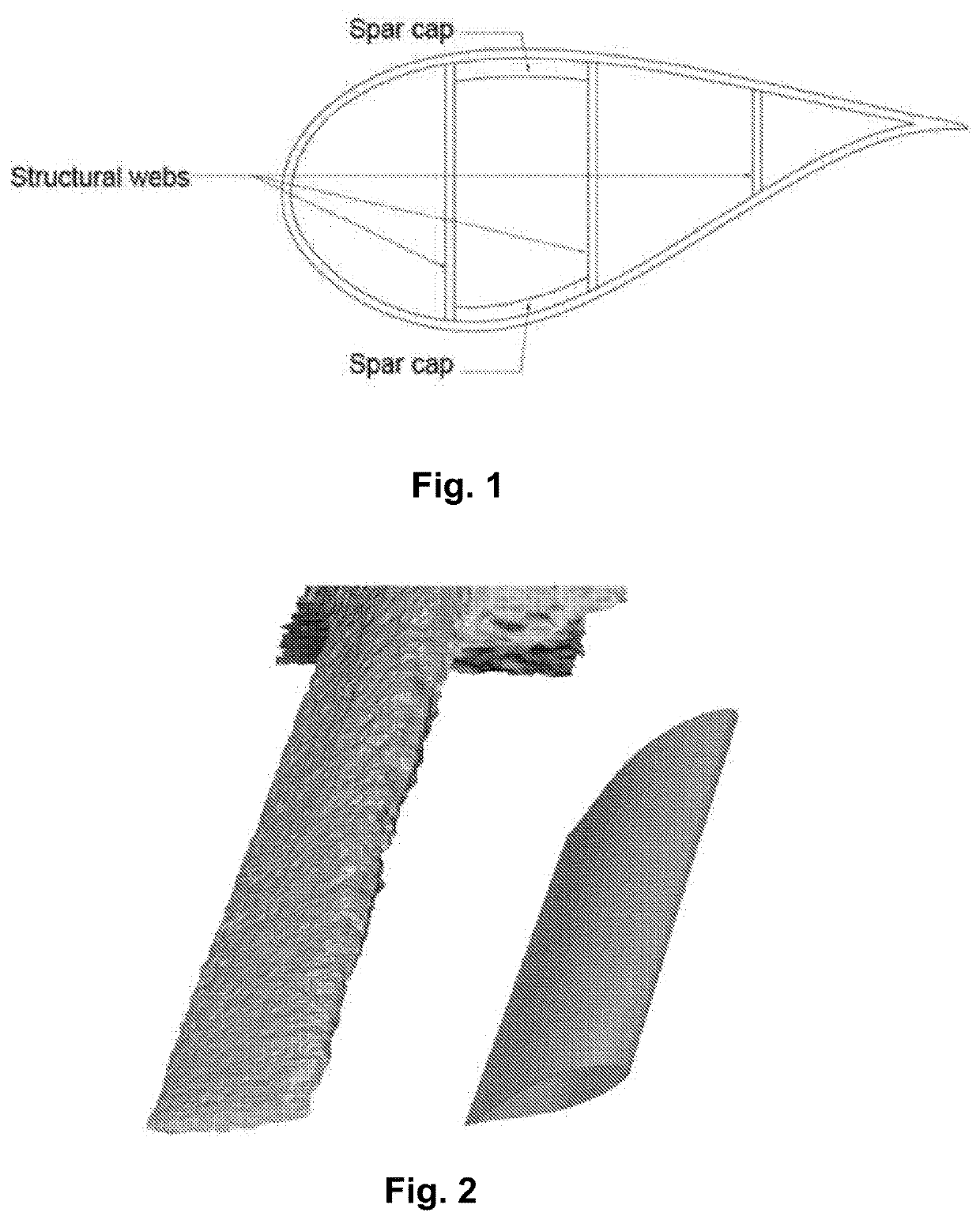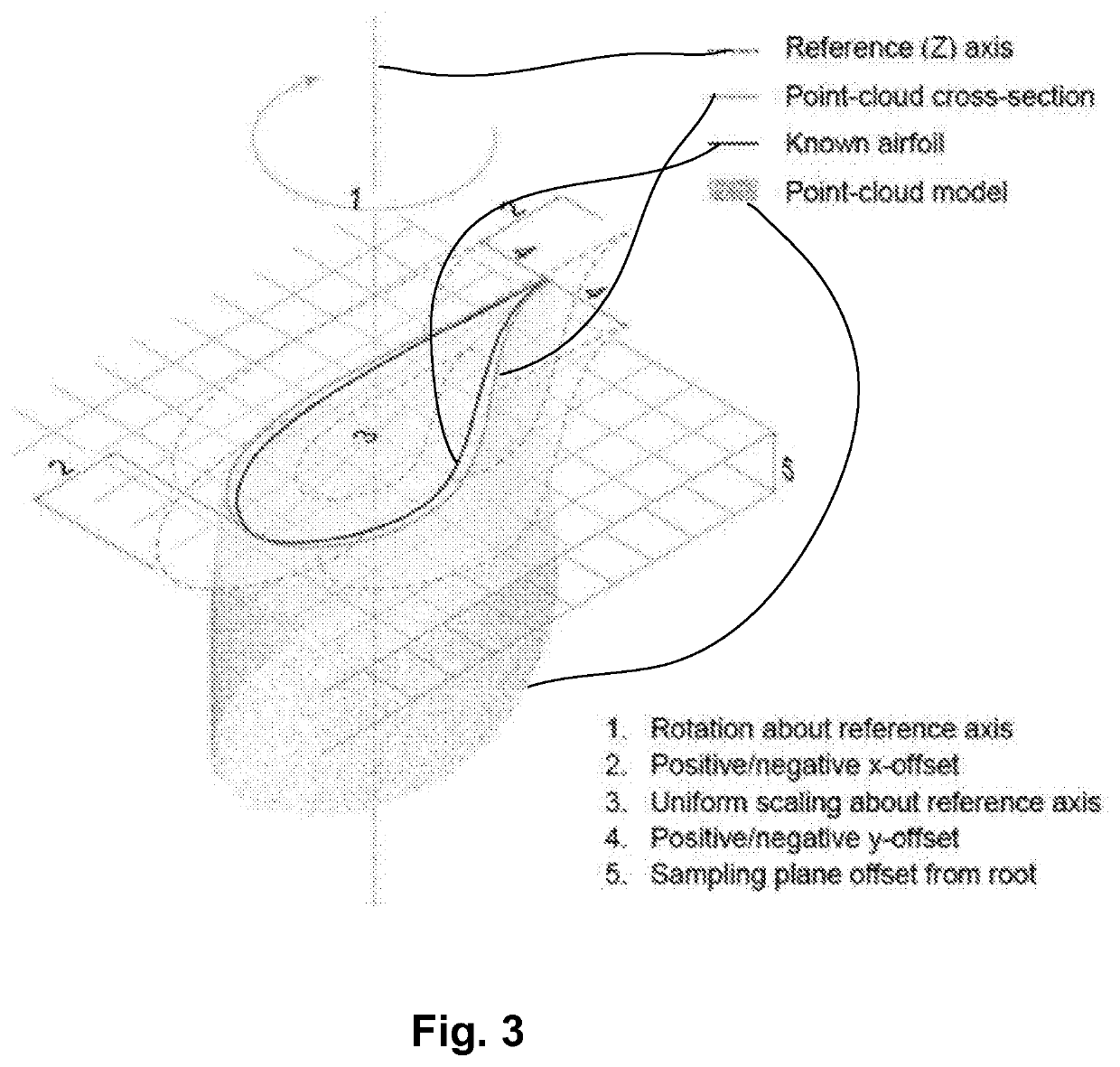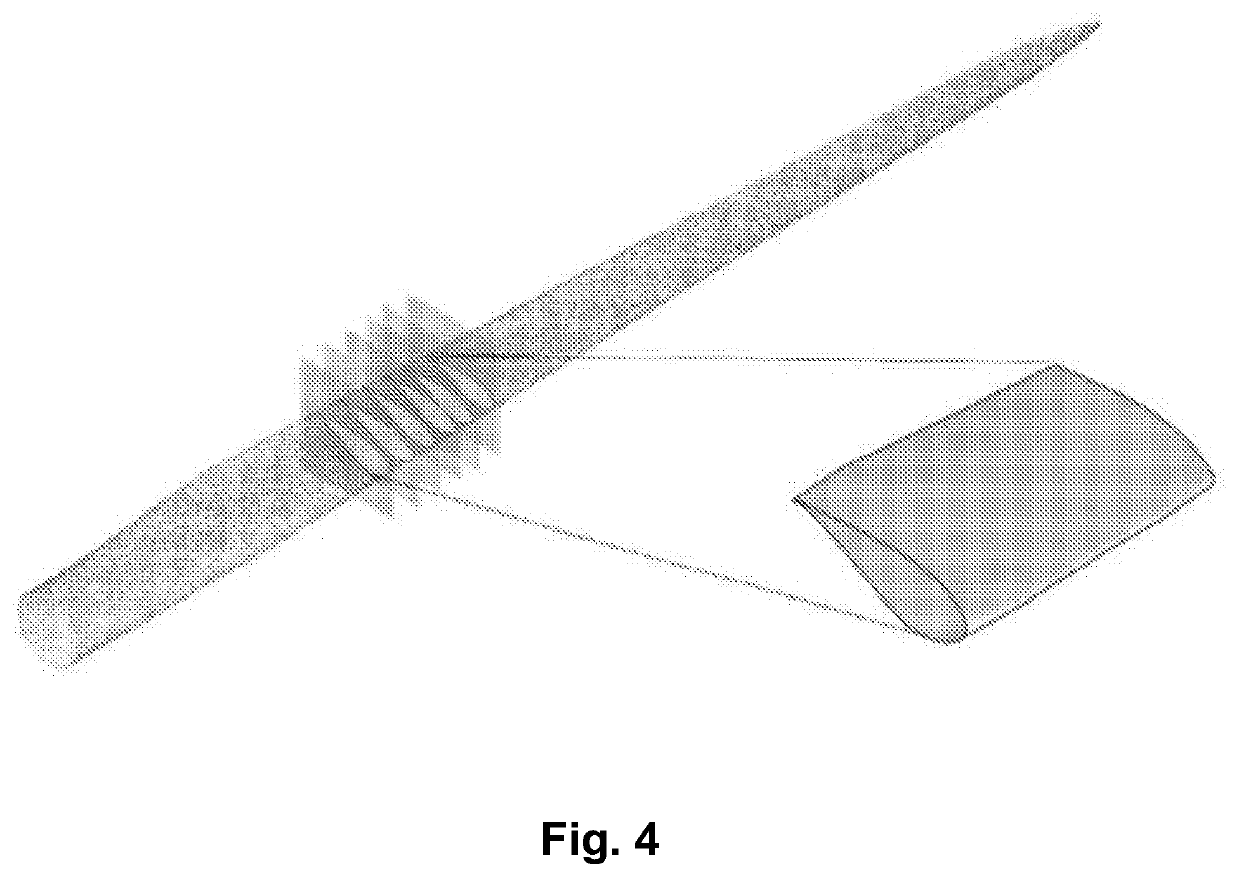Systems and Methods for Predicting the Geometry and Internal Structure of Turbine Blades
a technology of internal structure and turbine blades, applied in the field of prediction systems and methods, can solve the problems of reducing the fitness score and reducing the efficiency of the turbine blad
- Summary
- Abstract
- Description
- Claims
- Application Information
AI Technical Summary
Benefits of technology
Problems solved by technology
Method used
Image
Examples
Embodiment Construction
[0030]To facilitate an understanding of the principles and features of the present invention, various illustrative embodiments are explained below. To simplify and clarify explanation, the invention is described below as applied to predicting the geometry of a wind turbine blade. One skilled in the art will recognize, however, that the invention is not so limited. Instead, as those skilled in the art would understand, the various embodiments of the present invention also find application in other areas, including, but not limited to, hydro turbine blades, propellers, impellers, and the like.
[0031]The components, steps, and materials described hereinafter as making up various elements of the invention are intended to be illustrative and not restrictive. Many suitable components, steps, and materials that would perform the same or similar functions as the components, steps, and materials described herein are intended to be embraced within the scope of the invention. Such other compone...
PUM
 Login to View More
Login to View More Abstract
Description
Claims
Application Information
 Login to View More
Login to View More - R&D
- Intellectual Property
- Life Sciences
- Materials
- Tech Scout
- Unparalleled Data Quality
- Higher Quality Content
- 60% Fewer Hallucinations
Browse by: Latest US Patents, China's latest patents, Technical Efficacy Thesaurus, Application Domain, Technology Topic, Popular Technical Reports.
© 2025 PatSnap. All rights reserved.Legal|Privacy policy|Modern Slavery Act Transparency Statement|Sitemap|About US| Contact US: help@patsnap.com



